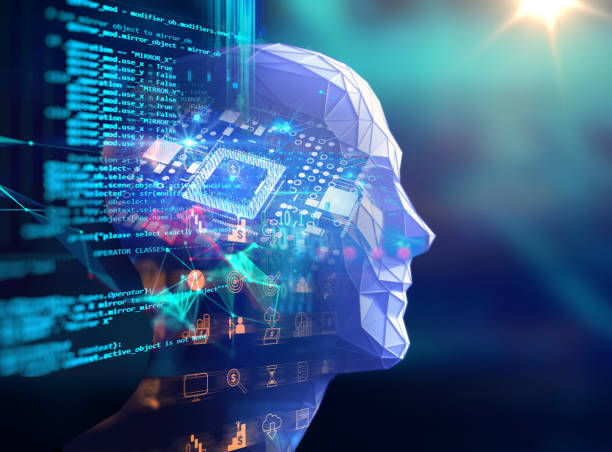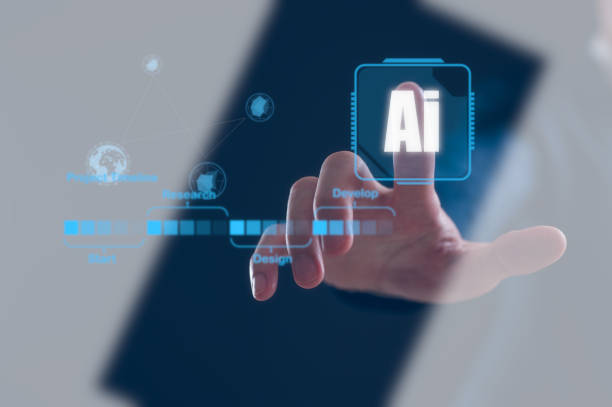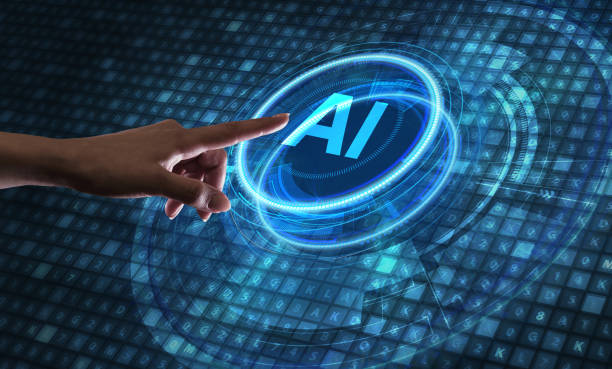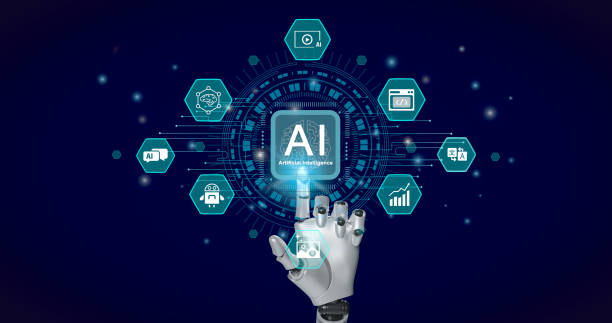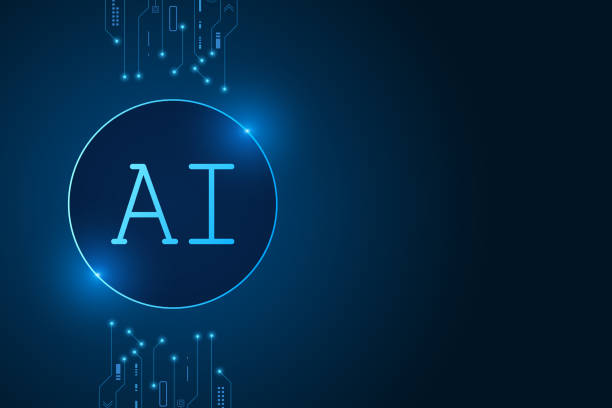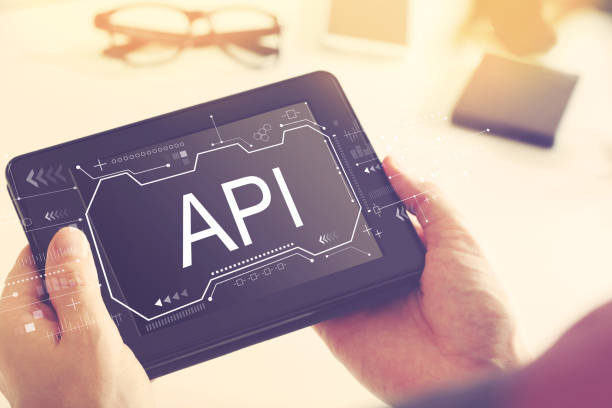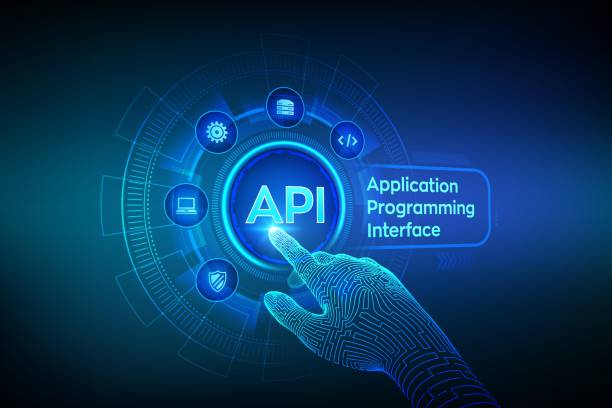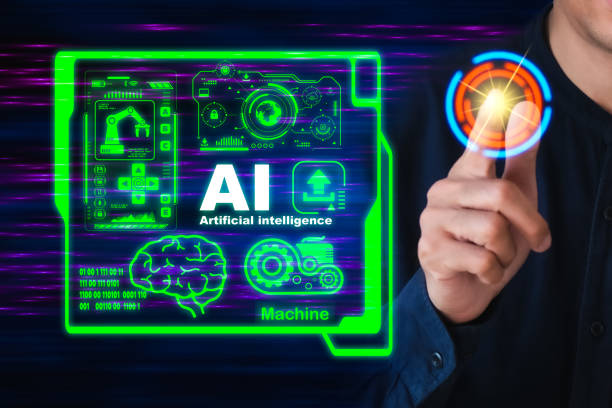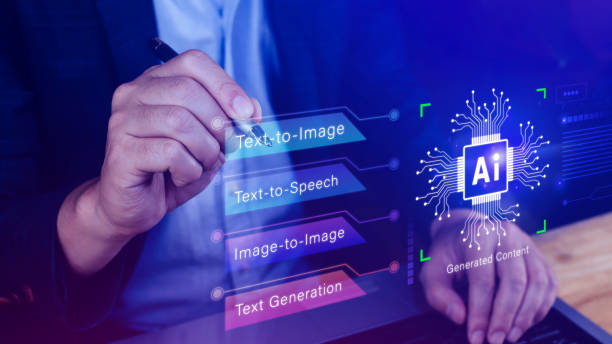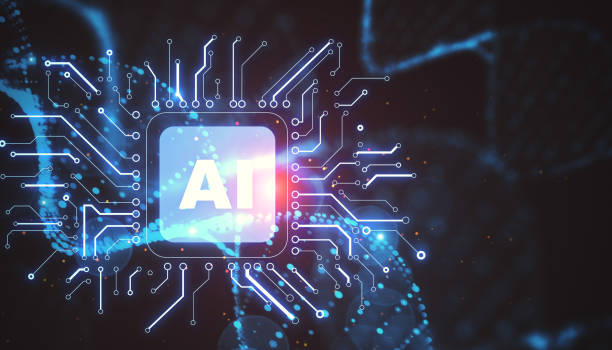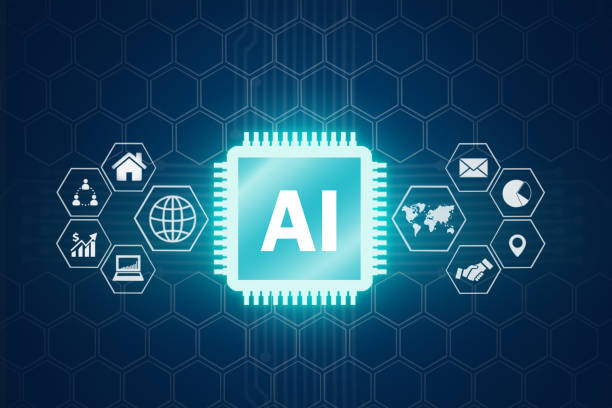What is an Artificial Intelligence Robot and How Does it Work?
In today’s world, the term #Artificial_Intelligence (AI) is increasingly heard.
One manifestation of this technology is the Artificial Intelligence Robot.
But what exactly is an artificial intelligence robot and how does it work? Simply put, an artificial intelligence robot is a combination of two main concepts: robotics and artificial intelligence.
Robotics deals with the construction and design of physical machines that are capable of performing specific tasks.
On the other hand, artificial intelligence gives machines the ability to think, learn, and make decisions.
When these two technologies are combined, the result is an intelligent robot that can perform complex tasks that previously only humans could do.
These robots use complex algorithms and neural networks to analyze data, identify patterns, and make decisions.
For example, an artificial intelligence robot in a factory production line can automatically identify defective parts and remove them from the line, while an artificial intelligence robot in a hospital can assist surgeons in performing complex operations.
The operation of these robots briefly includes receiving information through sensors, processing information using artificial intelligence algorithms, and performing the appropriate action based on data analysis.
Are you falling behind in the competition with large online stores?
Rasaweb can bring your business online and increase your market share with professional e-commerce website design!
✅ Increase brand credibility and customer trust
✅ Easy shopping experience leads to more sales
⚡ Take action now to receive free website design consultation!
Types of Artificial Intelligence Robots: Applications and Differences
There are different types of artificial intelligence robots, each designed for specific applications.
This variety is determined by the type of tasks the robot is capable of performing, how it interacts with the environment, and its level of intelligence.
One of the common classifications is the division of robots based on their application.
For example, industrial robots are used to perform repetitive and heavy tasks in production lines, while service robots are designed to provide services to humans in various environments such as hospitals, hotels, and restaurants.
Another type of robot is the self-driving robot, which can move in complex environments without human intervention.
These robots use advanced sensors and artificial intelligence algorithms to identify obstacles, plan routes, and make decisions.
In addition, artificial intelligence robots can also be classified based on their level of intelligence.
Some robots are only capable of performing pre-determined tasks, while others can learn from their experiences and improve their performance.
Advanced artificial intelligence robots use deep neural networks and machine learning algorithms to solve complex problems.
Click here to preview your posts with PRO themes ››
Advantages of Using Artificial Intelligence Robots in Various Industries
There are many advantages to using artificial intelligence robots in various industries.
One of the most important of these benefits is increased productivity and reduced costs.
Robots can perform tasks continuously and without fatigue, leading to increased speed and accuracy in production.
In addition, robots can work in dangerous and difficult environments, which reduces risks to human resources.
In the manufacturing industry, artificial intelligence robots can be used to perform tasks such as welding, painting, and assembling parts.
In the medical industry, robots can assist surgeons in performing complex operations and increase the accuracy and speed of surgery.
In the transportation industry, self-driving robots can reduce traffic and increase road safety.
In addition, the use of artificial intelligence robots can lead to improved quality of products and services.
Robots can perform tasks with greater accuracy than humans, which leads to fewer errors and increased customer satisfaction.
Overall, the use of artificial intelligence robots can help companies become more competitive and increase their profitability.
| Industry | Application of Artificial Intelligence Robot | Advantages |
|---|---|---|
| Manufacturing | Welding, painting, assembly | Increased speed, accuracy, cost reduction |
| Medical | Surgery, disease diagnosis, patient care | Increased accuracy, reduced risks, improved quality of care |
| Transportation | Self-driving, traffic management | Reduced traffic, increased safety, reduced fuel consumption |
Challenges and Limitations of Using Artificial Intelligence Robots
Despite the many benefits, there are also challenges and limitations to using artificial intelligence robots.
One of the most important of these challenges is the high cost of developing and deploying robots.
Advanced artificial intelligence robots require complex hardware and software that can be very expensive.
In addition, robots require periodic maintenance and repairs, which can also be costly.
Another challenge is the need for high expertise and skills to program, control, and maintain robots.
Companies must train specialized human resources to work with robots or use the services of specialized companies.
There are also concerns about the social and economic effects of using artificial intelligence robots.
Some people worry that robots will eliminate jobs and increase social inequality.
In addition, ethical issues related to the use of robots, such as privacy and data security, should also be considered.
Overall, for successful use of artificial intelligence robots, companies must be fully aware of its challenges and limitations and have appropriate planning to deal with them.
Artificial intelligence robots can help a lot, but they should be handled with caution.
Are you losing potential customers due to an unprofessional website? Rasaweb is your answer! With our specialized corporate website design services:
✅ Enhance the credibility and position of your business
✅ Experience attracting more targeted customers
⚡ Take action now to receive a free consultation!
What to Expect from the Future of Artificial Intelligence Robots?
The future of artificial intelligence robots looks very bright and promising.
With the ever-increasing advancement of technology, robots are expected to become smarter, more powerful, and more versatile.
One of the important trends in this field is the development of self-learning robots that can learn from their experiences and improve their performance.
These robots will be able to perform more complex tasks and operate in unpredictable environments.
In addition, artificial intelligence robots are expected to be developed with new capabilities such as emotion recognition, natural interaction with humans, and collaboration with other robots.
These robots can play an important role in our daily lives and help us perform various tasks.
For example, home robots can help us clean the house, cook, and care for the elderly.
Educational robots can help students learn complex concepts.
Therapeutic robots can help patients in rehabilitation and improve mental health.
Overall, artificial intelligence robots will play a very important role in our lives in the future and will help us live better lives.
Artificial intelligence robots can make life easier.
The Role of Artificial Intelligence Robots in Human Daily Life
Artificial intelligence robots are increasingly playing a prominent role in human daily life.
From smart homes to self-driving cars, artificial intelligence robots are changing the way we live and work.
In homes, robotic vacuum cleaners, smart lighting systems, and voice assistants like Alexa and Siri help us automate everyday tasks and make life easier.
In cities, intelligent traffic management systems and self-driving cars help reduce traffic and air pollution.
In the workplace, artificial intelligence robots can perform repetitive and tedious tasks, allowing us to focus on more important and creative tasks.
In addition, artificial intelligence robots also play an important role in the healthcare industry.
Robots can assist surgeons in performing complex operations, help nurses care for patients, and help doctors diagnose diseases.
Overall, artificial intelligence robots help us live easier, healthier, and more productive lives.
Artificial intelligence robots have made life much easier.
Ethical Considerations in Designing and Using Artificial Intelligence Robots
With the increasing use of artificial intelligence robots, ethical considerations related to the design and use of this technology become more important.
One of the most important of these considerations is accountability for the decisions and actions of robots.
If a robot makes a decision that leads to harm, who will be responsible? The robot’s designer? The robot’s user? Or the robot itself? These questions do not have clear answers and require careful discussion and review.
Another ethical consideration is the issue of privacy and data security.
Artificial intelligence robots need to collect and process a lot of data to perform their tasks, which can include personal information about people.
How can this information be protected and prevent it from being misused? There are also concerns about discrimination and inequality.
If artificial intelligence algorithms are trained on biased data, they may make decisions that are detrimental to certain groups of people.
Overall, for ethical use of artificial intelligence robots, these considerations should be taken into account and appropriate laws and regulations should be developed for the design and use of this technology.
| Ethical Issue | Description | Solutions |
|---|---|---|
| Accountability | Who is responsible for robot decisions? | Developing laws and regulations, designing transparent and explainable robots |
| Privacy | How to protect personal information? | Using encryption, limiting data collection, transparency about data use |
| Discrimination | How to prevent biased decisions? | Using diverse and unbiased data, reviewing and evaluating algorithms |
How Can Artificial Intelligence Robots Help Solve Global Problems?
Artificial intelligence robots can play an important role in solving global problems.
From climate change to poverty and disease, artificial intelligence robots can help us find effective solutions.
In the field of climate change, artificial intelligence robots can be used to optimize energy consumption, predict weather patterns, and develop new technologies for clean energy production.
In the field of poverty, artificial intelligence robots can be used to identify people in need, provide online training, and create new job opportunities.
In the field of healthcare, artificial intelligence robots can be used to diagnose diseases, develop new drugs, and provide healthcare to remote areas.
In addition, artificial intelligence robots can play an important role in crisis management and helping victims of natural disasters.
Overall, artificial intelligence robots can help us have a more sustainable, just, and healthy world.
Artificial intelligence robots can make the world a better place.
Does your company’s website create a professional and lasting first impression on potential customers? Rasaweb, with professional corporate website design, not only represents the credibility of your brand, but also paves the way for your business growth.
✅ Create a powerful and trustworthy brand image
✅ Attract targeted customers and increase sales
⚡ Get a free consultation
Steps to Build an Artificial Intelligence Robot from Idea to Implementation
Building an artificial intelligence robot is a complex and multi-stage process that requires expertise in various fields such as robotics, artificial intelligence, programming, and software engineering.
The first step is to define the problem and determine the goal.
It should be specified what problem the robot is going to solve and what tasks it is going to perform.
The second step is the hardware design of the robot.
In this step, the type of robot, electronic parts, sensors, actuators, and other physical components of the robot should be selected and designed.
The third step is the software design of the robot.
In this step, artificial intelligence algorithms, neural networks, and other software needed to control and manage the robot should be designed and implemented.
The fourth step is the integration of hardware and software.
In this step, the hardware and software of the robot should be combined and the necessary tests should be performed to ensure the correct functioning of the robot.
The fifth step is the training and optimization of the robot.
In this step, the robot should be trained using real data and its performance should be optimized.
The sixth step is the deployment and maintenance of the robot.
In this step, the robot should be deployed in a real environment and maintained and repaired regularly.
Overall, building an artificial intelligence robot requires patience, perseverance, and teamwork.
Resources and Tools Needed for Learning and Developing Artificial Intelligence Robots
If you are interested in learning and developing artificial intelligence robots, there are many resources and tools available to you.
One of the best ways to start is to participate in online training courses.
Sites like Coursera, edX, and Udacity offer various courses in the field of robotics and artificial intelligence.
In addition, there are many books and articles about artificial intelligence robots that you can use.
To develop artificial intelligence robots, you need different tools.
Some of these tools include programming languages such as Python and C++, artificial intelligence frameworks such as TensorFlow and PyTorch, and robotics simulators such as Gazebo and V-REP.
In addition, you need various hardware such as Arduino and Raspberry Pi development boards, sensors, actuators, and other electronic components.
Also, participating in open source projects and collaborating with other developers can help you in learning and developing artificial intelligence robots.
Overall, by using the right resources and tools, you can become a successful artificial intelligence robot developer.
This path requires effort and perseverance.
Frequently Asked Questions
| Row | Question | Answer |
|---|---|---|
| 1 | What is an artificial intelligence robot? | An artificial intelligence robot is a machine that is capable of understanding, reasoning, learning, and problem solving, and can perform complex tasks with relative autonomy. |
| 2 | What are the most important applications of artificial intelligence robots? | Main applications include industrial manufacturing, customer service (chatbots), medicine and surgery, self-driving transportation, space exploration, and military affairs. |
| 3 | What is the main difference between an artificial intelligence robot and a regular robot? | A regular robot only follows programmed instructions, while an artificial intelligence robot can learn from data, make decisions, and adapt to new environments. |
| 4 | How do artificial intelligence robots learn? | They identify patterns and improve their performance through machine learning algorithms (such as deep learning, reinforcement learning) and processing vast amounts of data. |
| 5 | Can artificial intelligence robots have emotions? | Currently, artificial intelligence robots do not have real emotions in the human sense. They can mimic or recognize emotions, but they do not have the understanding and experience of them. |
| 6 | What are the current limitations of artificial intelligence robots? | Limitations include the need for large amounts of data, inability to understand abstract concepts, lack of real creativity, ethical issues, and challenges of generalizability in new environments. |
| 7 | What is the role of artificial intelligence in the development of humanoid robots? | Artificial intelligence helps humanoid robots walk, maintain balance, understand their surroundings, interact with humans, and perform complex tasks. |
| 8 | How is the future of artificial intelligence robots predicted? | It is predicted that artificial intelligence robots will become smarter, more autonomous, and capable of performing more complex tasks in daily life and industry, and their interaction with humans will increase. |
| 9 | Can artificial intelligence robots replace all human jobs? | It is unlikely that all human jobs will be replaced. Robots take over many repetitive and dangerous tasks, but jobs that require creativity, empathy, and moral judgment will remain. |
| 10 | What ethical and social challenges arise with the expansion of artificial intelligence robots? | Challenges include issues related to privacy, data security, ethical decision-making by robots, impact on employment, and accountability in case of errors. |
And other services of Rasa Web advertising agency in the field of advertising
Smart SEO: Transform online growth with the help of Google Ads management.
Smart Marketing Automation: An exclusive service to grow website traffic based on marketing automation.
Smart Digital Advertising: Designed for businesses looking to increase website traffic through user experience customization.
Smart Website Development: A new service to increase campaign management by optimizing key pages.
Smart Sales Automation: A combination of creativity and technology for campaign management by custom programming.
And more than hundreds of other services in the field of internet advertising, advertising consulting and organizational solutions
Internet Advertising | Advertising Strategy | Advertorial Report
Sources
What jobs do AI and robotics create?
,Artificial Intelligence for Dummies
,Defining Artificial Intelligence
,What is Artificial Intelligence?
? Are you looking to upgrade your business in the digital world? Rasaweb Afarin, a leading digital marketing agency, with expertise in SEO, online advertising, and fast website design, paves the way for your success.
📍 Tehran, Mirdamad Street, next to the Central Bank, Kazerun Jonubi Alley, Ramin Alley No. 6

